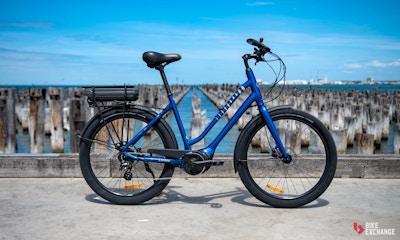First up: a full disclosure. I’m a sucker for all things Basque. Be it the culture, the heritage, the classy riders that the region seems to continually churn out, the amazing landscapes, or the food — it all makes me a little romantic, a little misty-eyed. So when the invitation came through from Orbea to attend the launch event for their 2017 Orca and Avant models, it was a no-brainer.
Situated in the hills of the Basque Country, near the Atlantic coastline, the town of Orio is ideally placed for testing bikes. This year Orio hosted a stage finish of the Vuelta Ciclista al Pais Vasco; the stage where Samuel Sanchez attacked to victory in the rain. The climb Orio shelters behind was where most of this year’s Vuelta a España peloton should have been eliminated on stage 15.
Orbea dates back to the 1840s when the company first started making firearms. Some 175 years later, the brand has moved away from guns, into and then out of prams, and then into the cycling industry. The Orbea of today is in a unique position, being run as a cooperative, with workers buying into it. Of the 160 employed at Orbea headquarters, 120 are part of the cooperative.
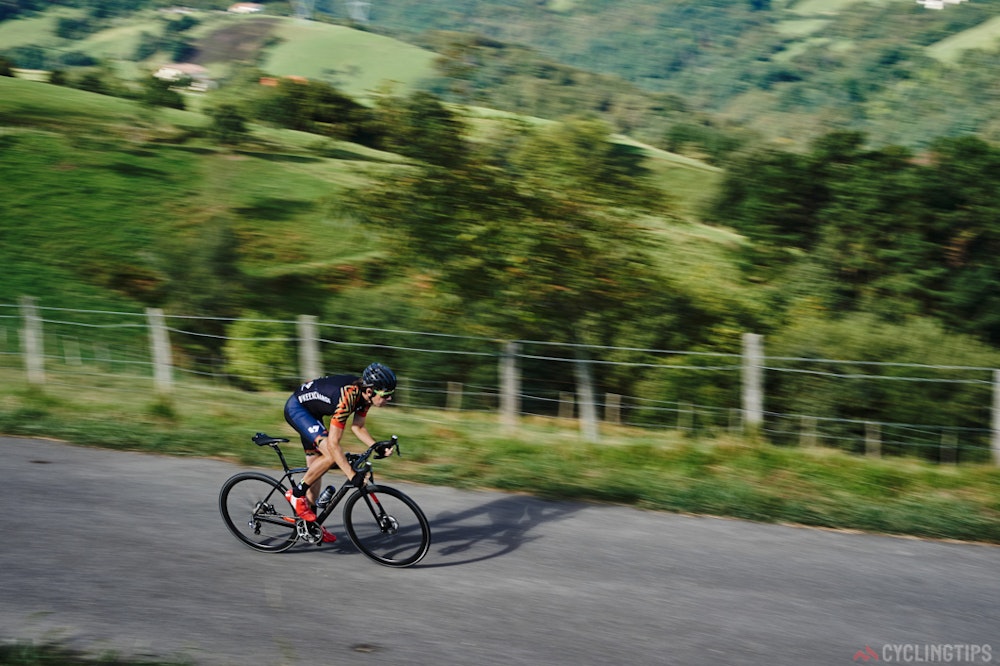
The latest incarnation of Orbea’s range-topping Orca first saw light at this year’s Tour de France, where (stand-in) Cofidis sprinter Geoffrey Soupe raced the entire Tour on a custom-painted version. Local Basque Cofidis rider Loïc Chetout also completed the Vuelta aboard the new bike, before turning up to the launch to show us assembled journalists how the bike should be treated.
The Orca has been overhauled for 2017 and for the first time comes in both rim and disc-brake versions. The revamp carries over very few aspects of the old version, mainly just the lines where the head tube and top tube met. This was something Orbea wanted to keep, as they felt it was ‘distinctively Orbea’.
The 2017 Orca features a new carbon layup which, with less material waste and an expanded polystyrene foam inner construction, has helped shave 80g off the rim-brake version of the frame compared to last year’s model. This brings the new Orca frame down to 795g compared to 875g. The disk version tips the scales at 840g.
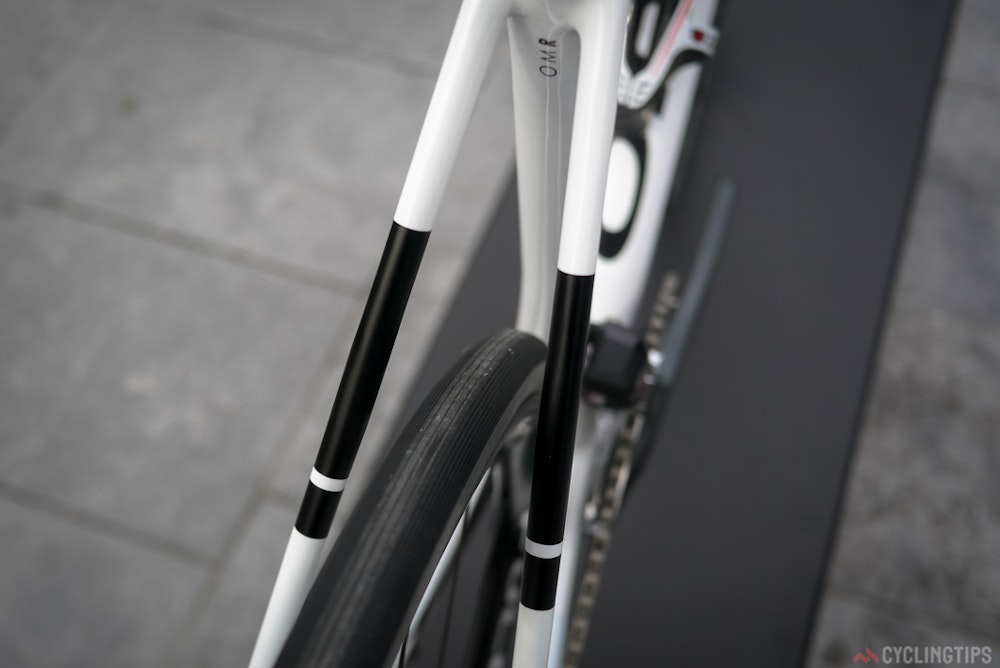
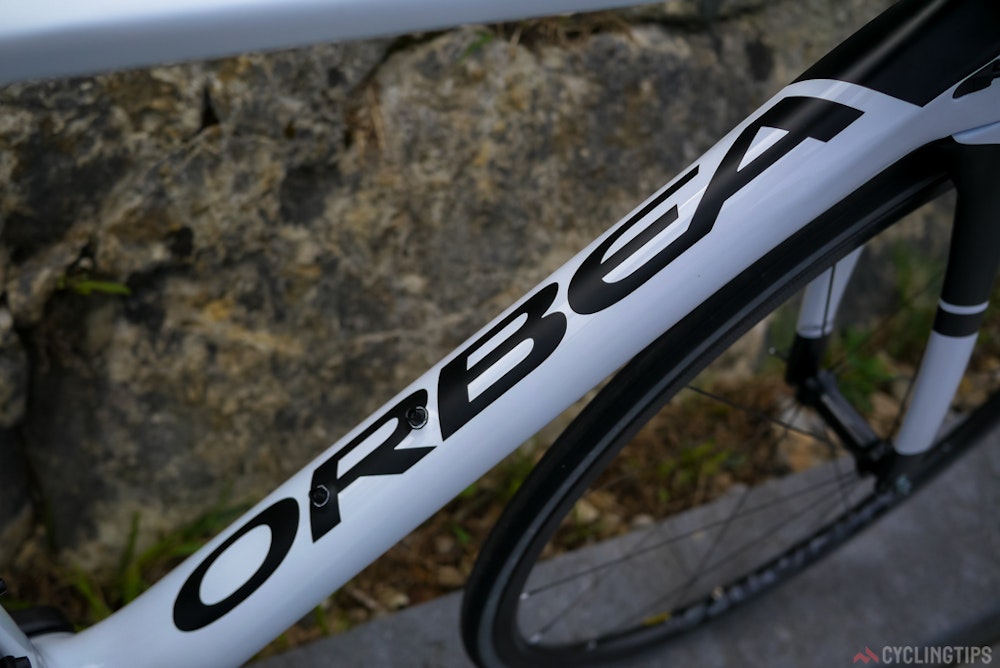
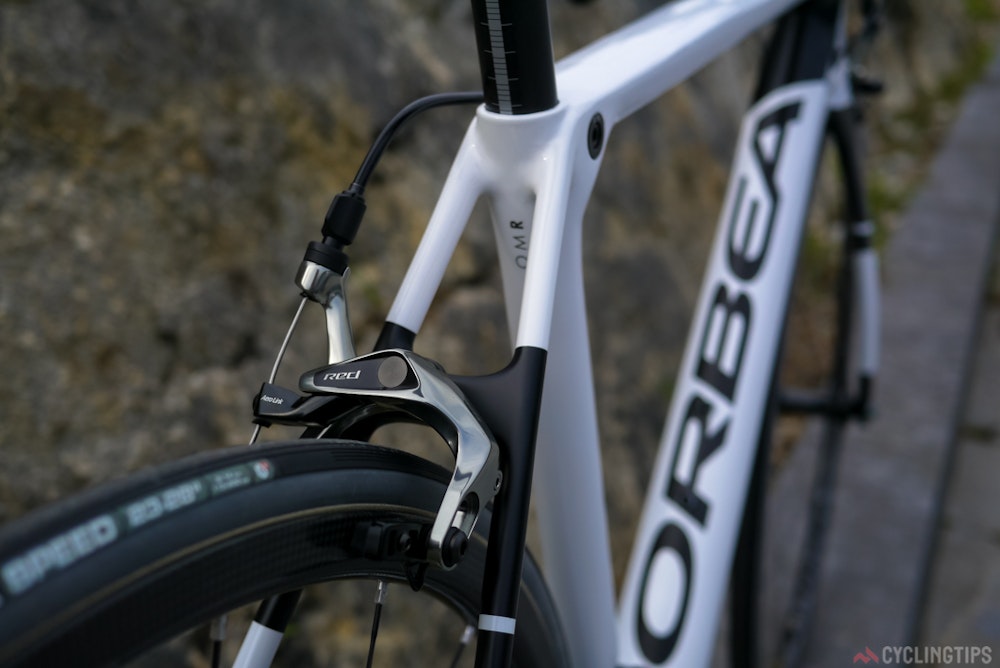
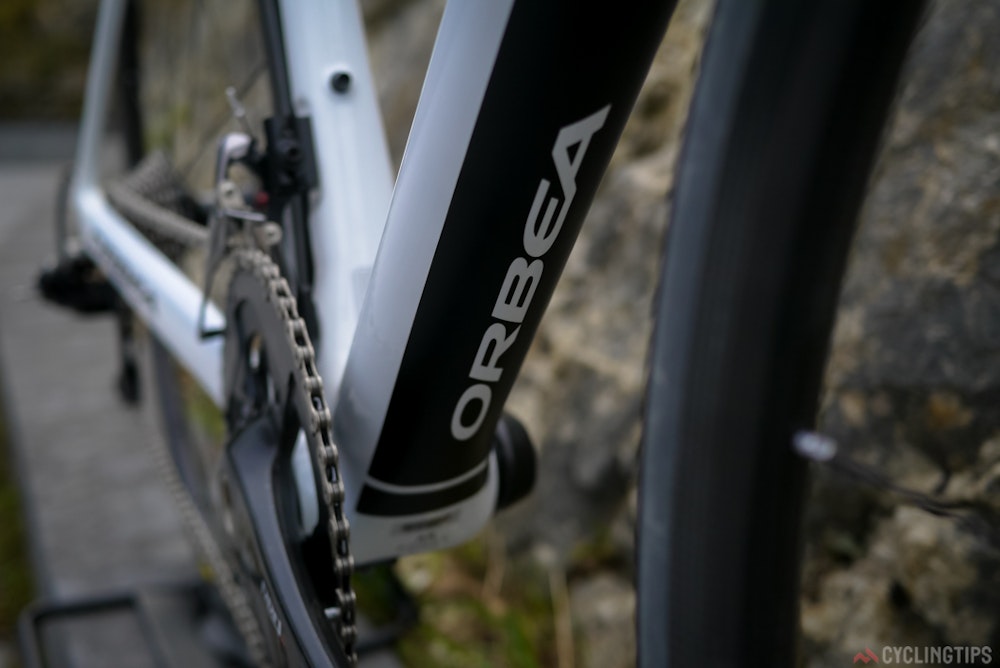
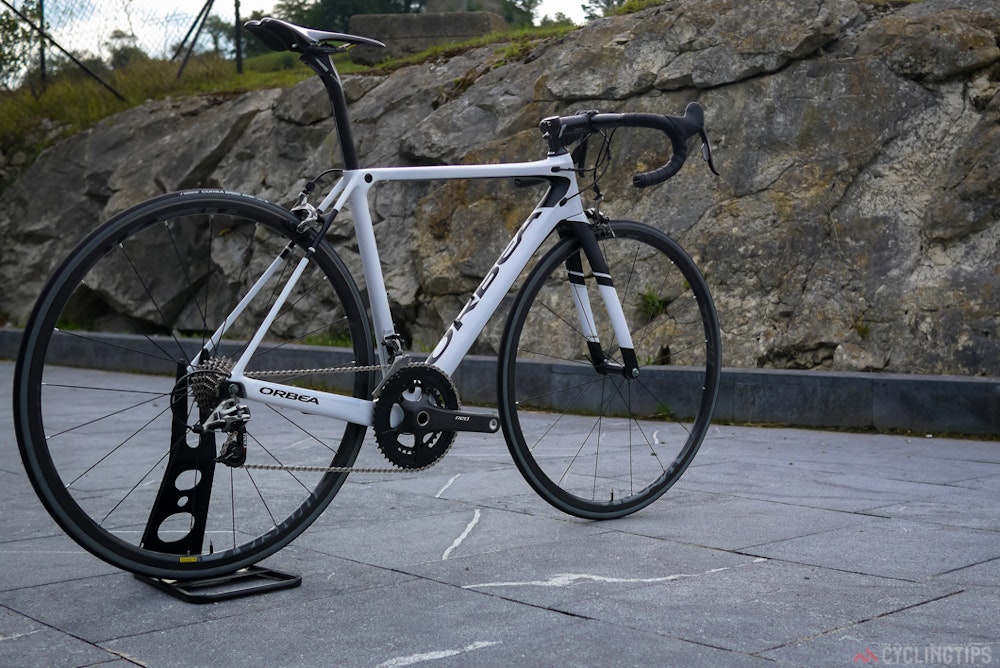
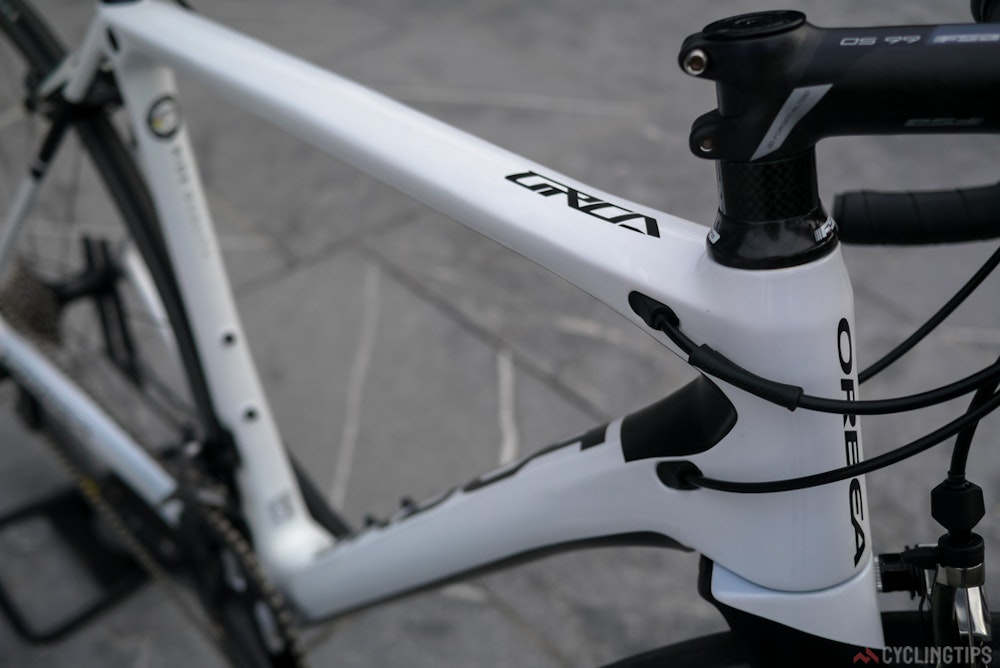
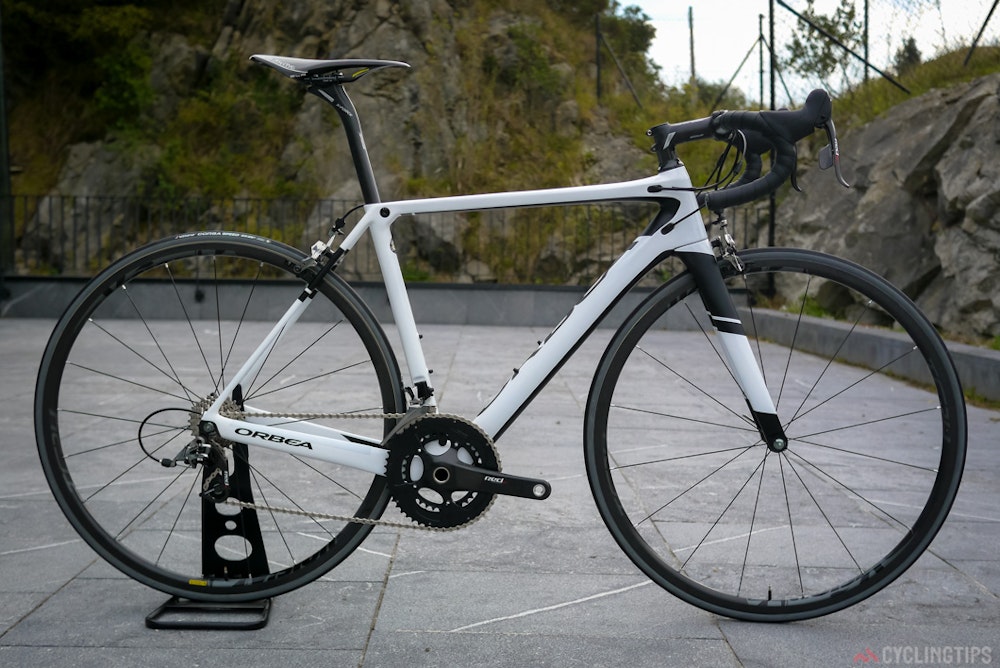
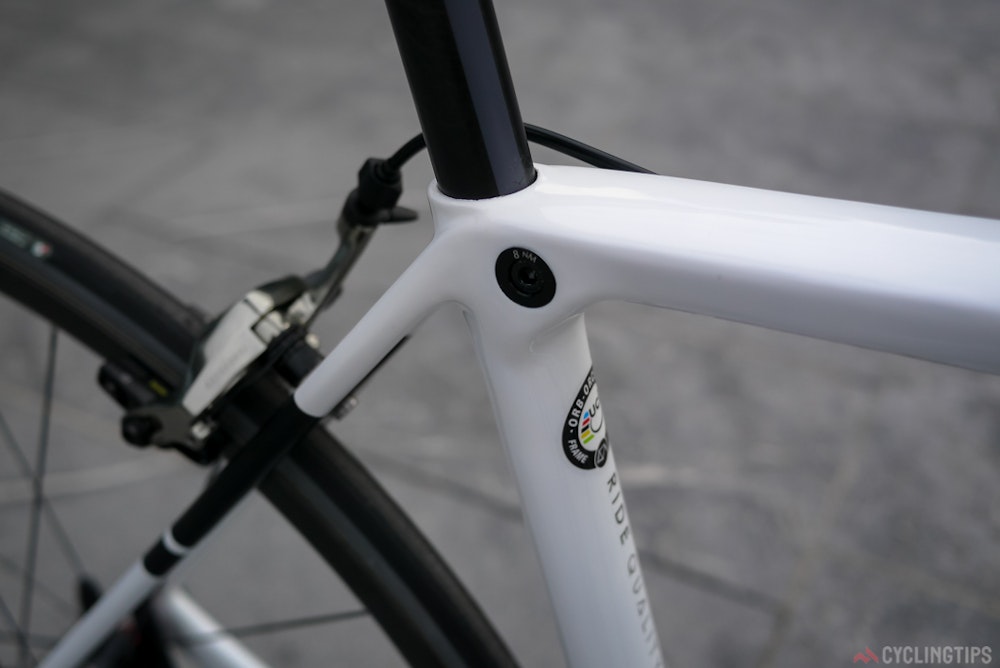
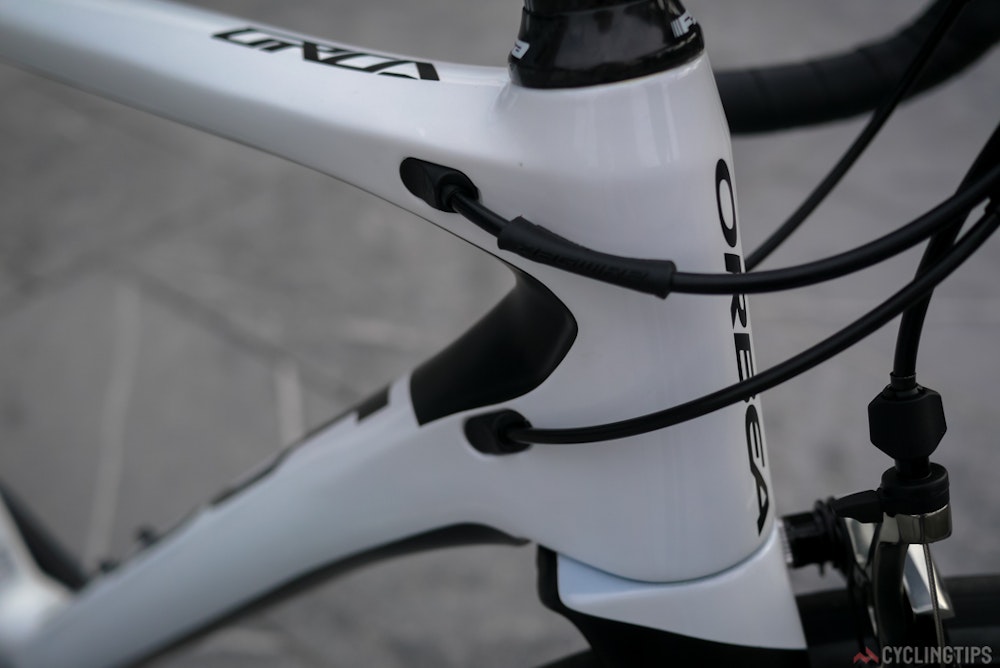
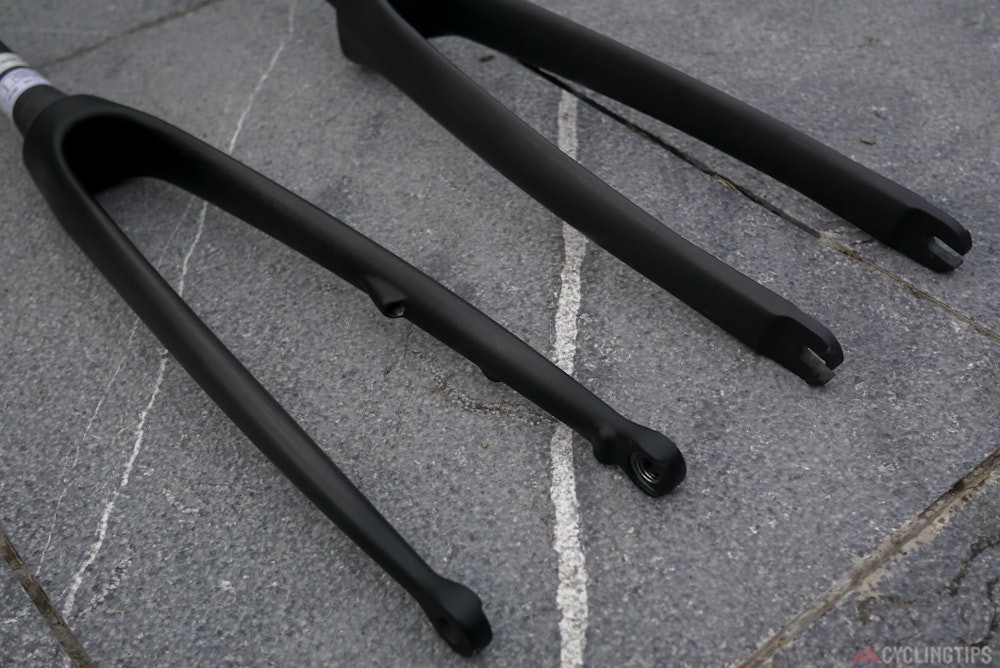
Tube angles have been steepened too — with input from Cofidis the bike has taken on a more aggressive design and feel. This includes a lower bottom bracket (269.5mm), a shorter wheelbase, a shorter chainstay (408mm across the range), a lower stack and longer reach. This is all hugely noticeable once out on the open road, making for a very pro position.
The fork has also shed some weight compared to last year, thanks to a 5mm reduction in length. The fork is also semi-integrated, carving into the down tube/head tube junction nicely. Further claims are the forks being 26% stiffer laterally and 20% stiffer frontally. There is a modified rake that’s also adjusted across the sizes to give similar performance feel to each size frame.
Last year’s model was very angular, hugging the wheel before flaring out at the hub. The new version has a flowing curve to it, something Orbea calls “flow free form”. The greater width reportedly allows for a smoother airflow, producing less pressure between wheel and fork legs. The result: a claimed four-second improvement at 49km/h over 10km.
The other upside is that it allows for the use of wider tyres. We were using 25mm tyres and there were bags of room for those wanting to use 28mm.
Orbea claims a 40% improvement in stopping distance when comparing the disc- and rim-brake versions. The company is aiming the bike squarely at the performance amateur market at the moment as currently, the UCI won’t allow disc brake use in races. Flat mount calipers and 12mm thru-axles are the disc-brake mounting options of choice.
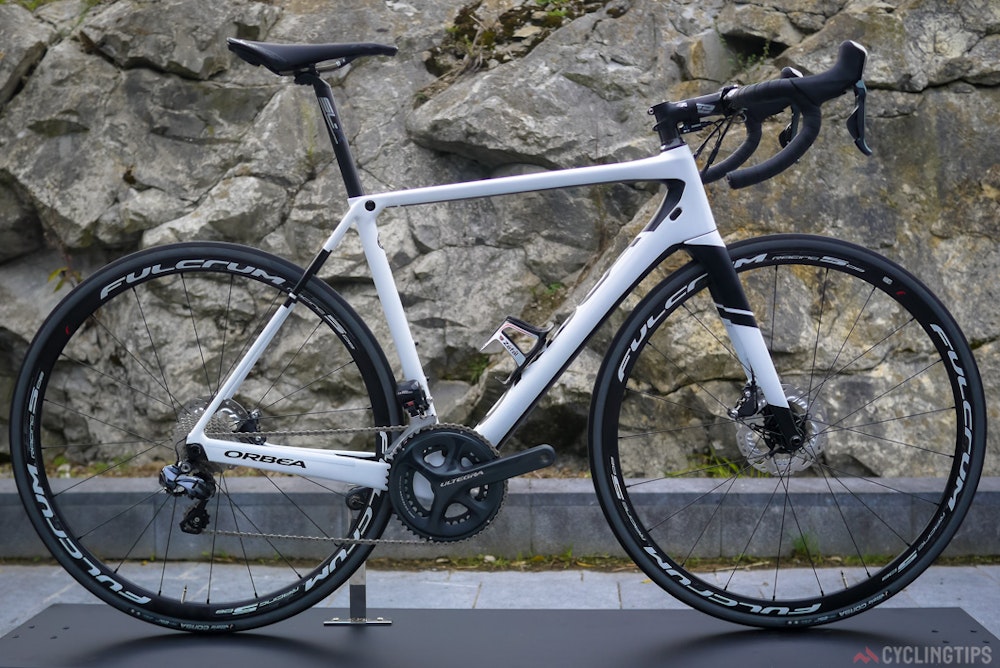
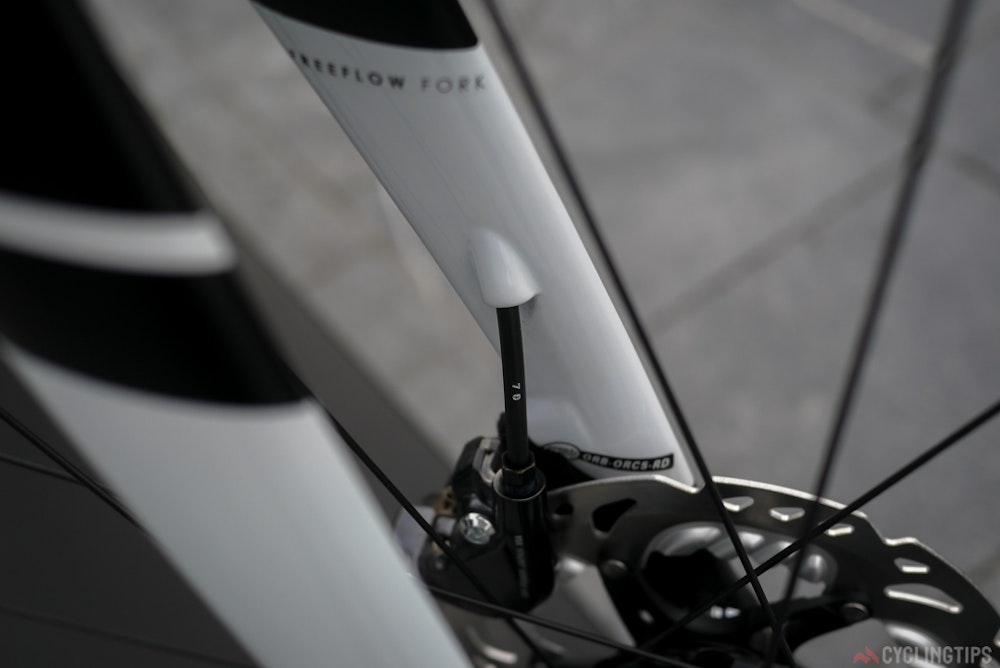
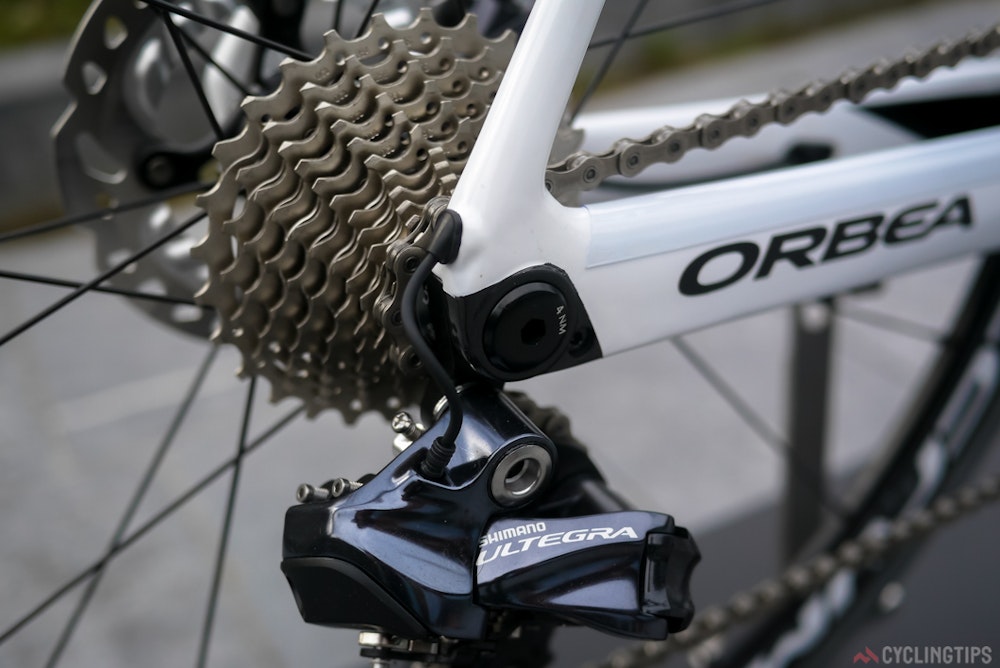

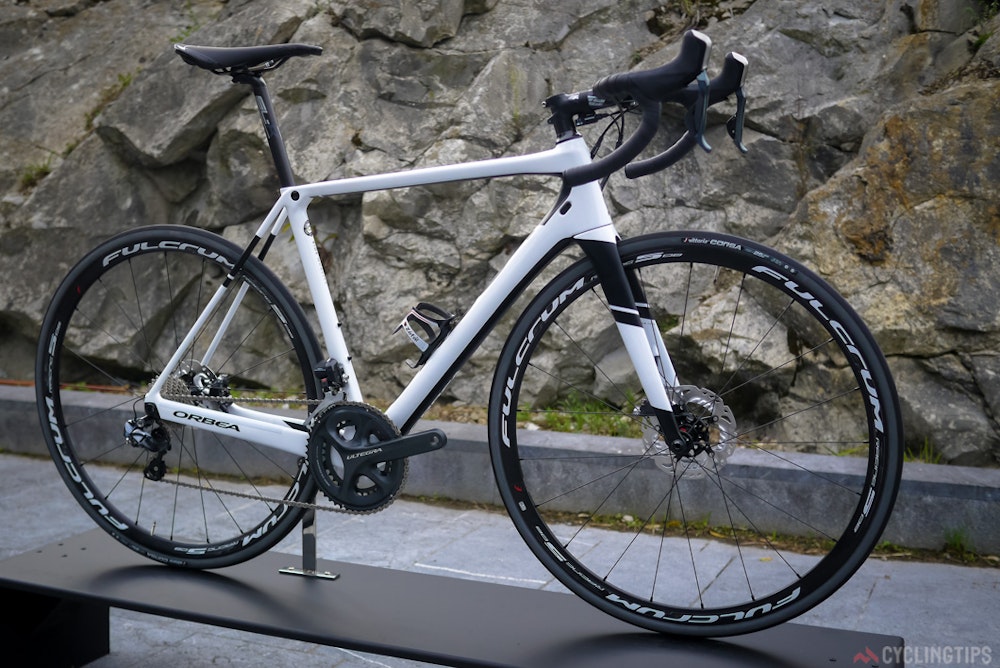
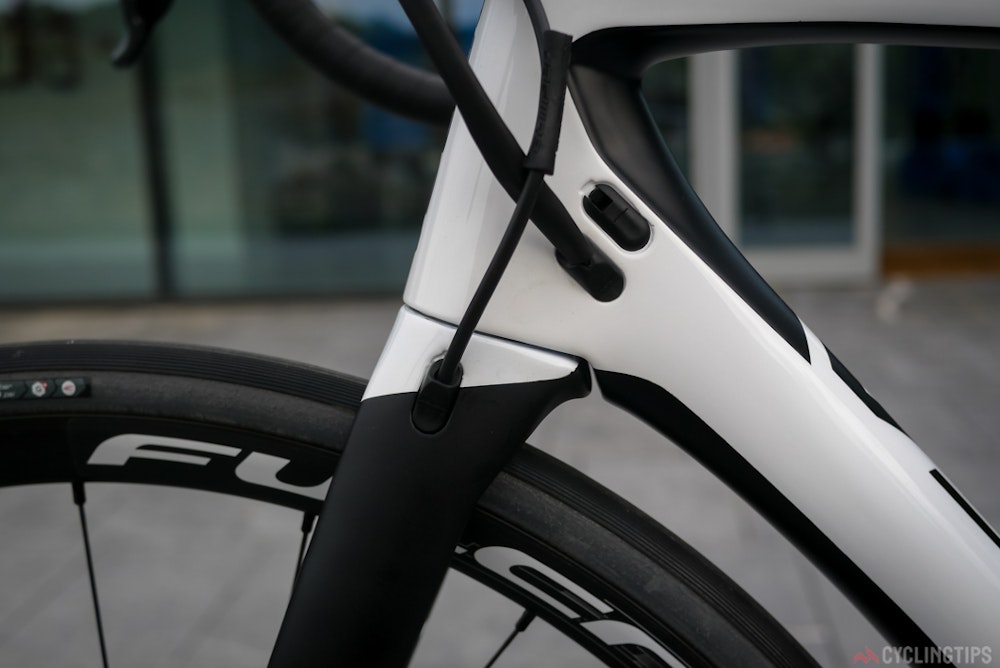
The new Orca range is extensive, if not a bit confusing. At the top of the range, using the latest frame design and carbon layup, is the OMR (Orbea Monocoque Race). Below this is OMP (Orbea Monocoque Performance) which utilises the 2015 frame shape for a slightly more relaxed position.
Then there’s the OME (Orbea Monocoque Evolution), sharing the same frame shape as the OMR but using a different carbon. All up there are 22 model and build options to choose from, and that’s before you get started on Orbea’s custom My-O program (see below).
Choice is a good thing but, to me, too much choice can be a little detrimental. You may need a helping hand from your local dealer to really work out what bike best suits your needs and budget.
MY-O
Many of us like to stand out a little, having a bike that catches the eye of fellow cyclists at the local coffee shop. Like several other brands, Orbea has come to realize this, and their My-O project allows buyers to customize their bike during the order process. Fancy an orange and lime green Orca with pink accents? No problem. Log on to their website, choose the bike you want and you can waste any number of hours making your bike as lovely (or garish) as you please. Working with your local Orbea dealer is part of the deal. The option to change components is available too.
My-O is a nice touch in an industry where bikes are slowly looking like they’re all coming out of the same cookie cutter. The service is free for any model over €3,000 (AU$4,500; US$3,300); below this, it costs €250 (AU$370; US$280).
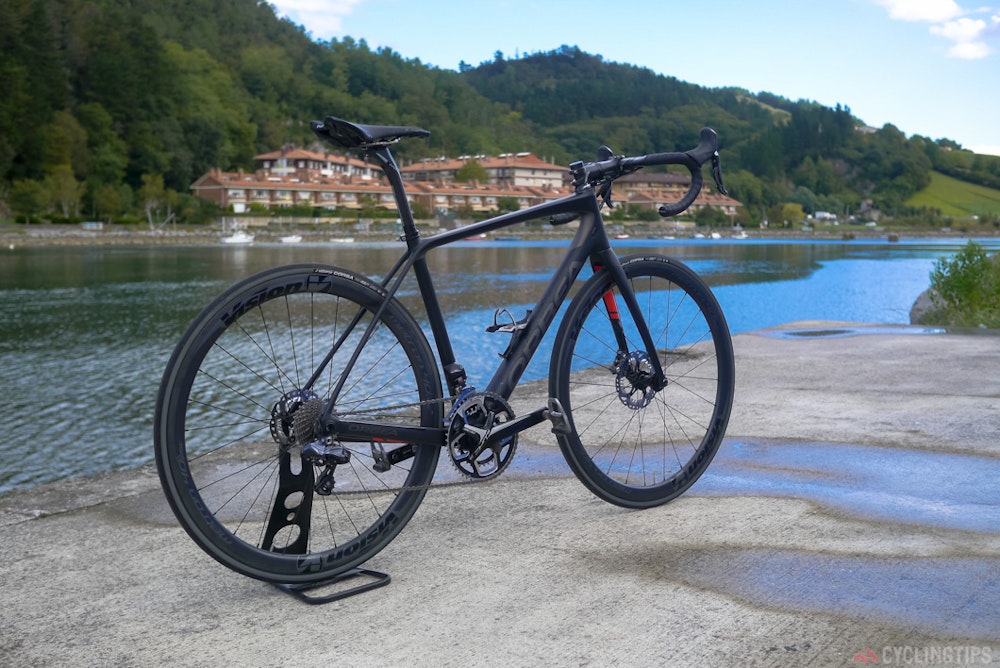
RIDING THE ORCA
The latest Orca is much like Cofidis rider Nacer Bouhanni: a little bit punchy. Throw your effort into the pedals and the bike lunges forward confidently.
The low weight and its snappy feel encourage you to get out the saddle and really hammer the bike over climbs. Considering the low-slung position I was amazed at how often I caught myself in the drops, even when climbing. I’d say this is a testament to the comfort of the bike and the well thought-out angles in the design.
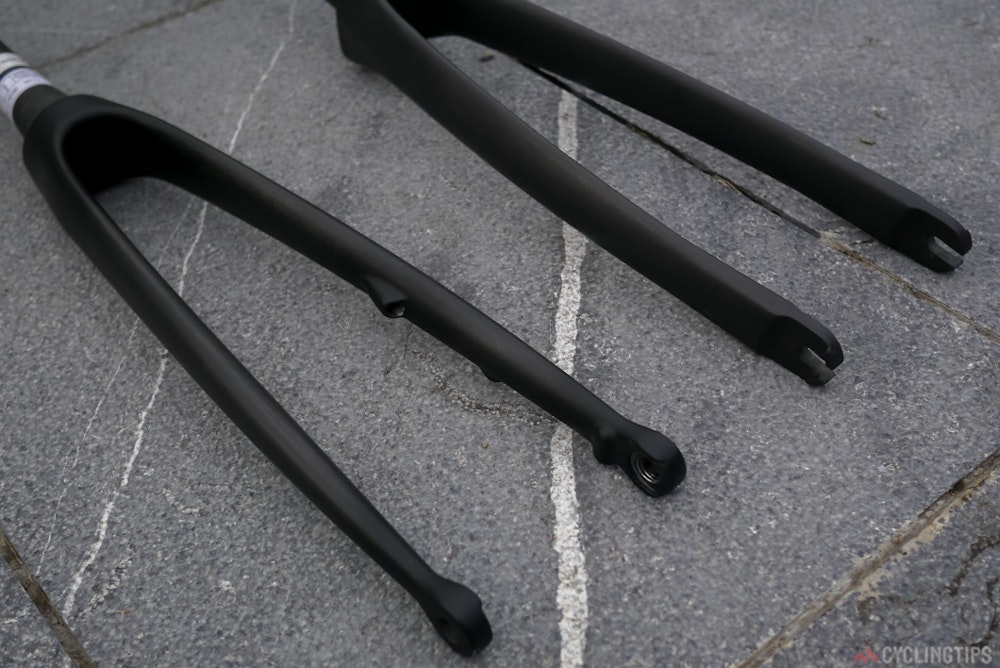
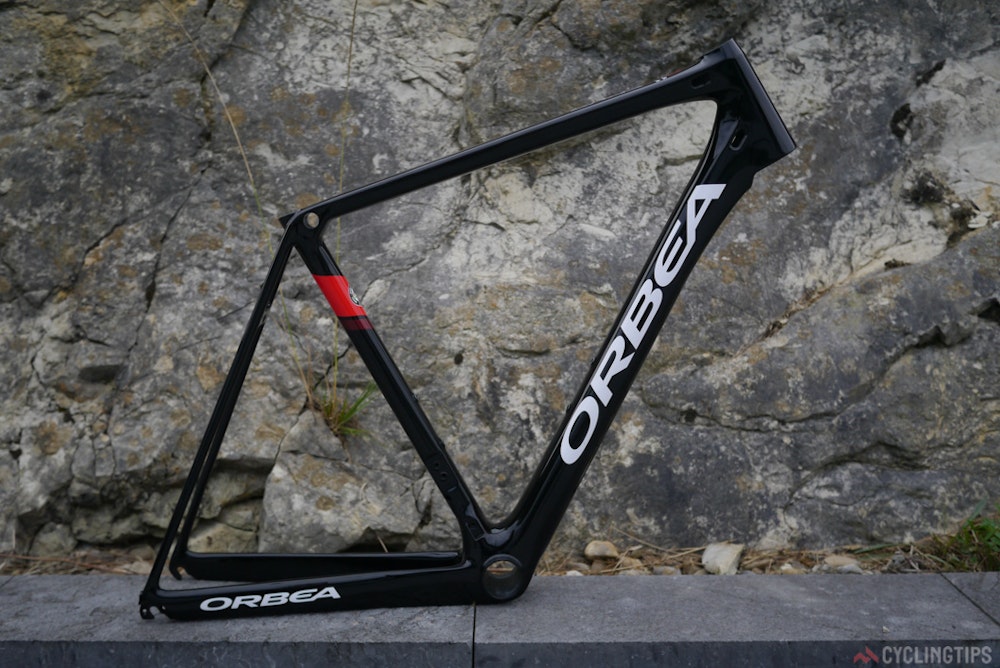
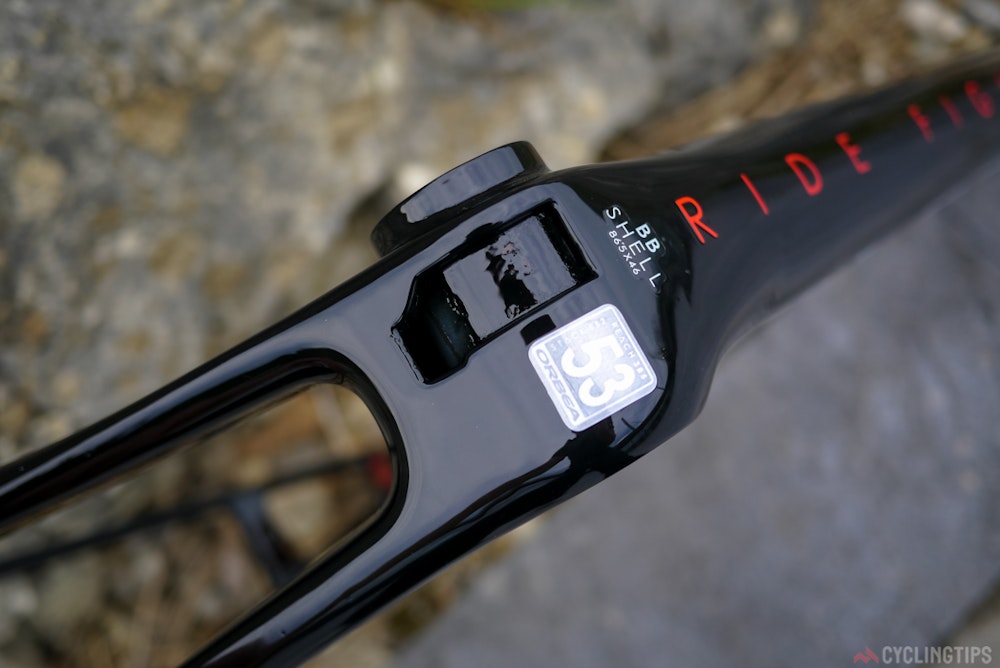
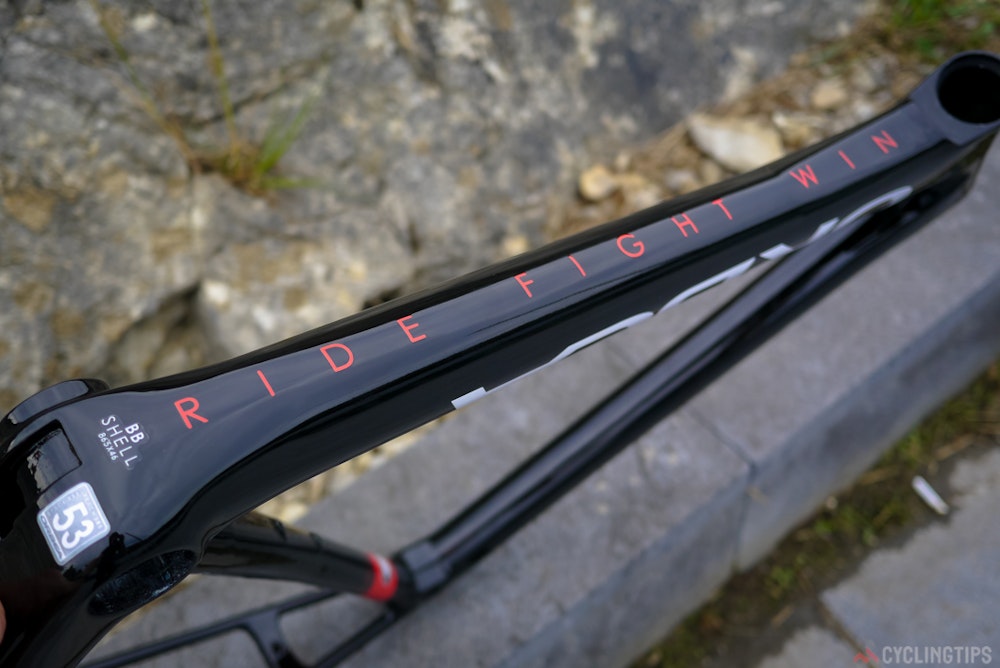
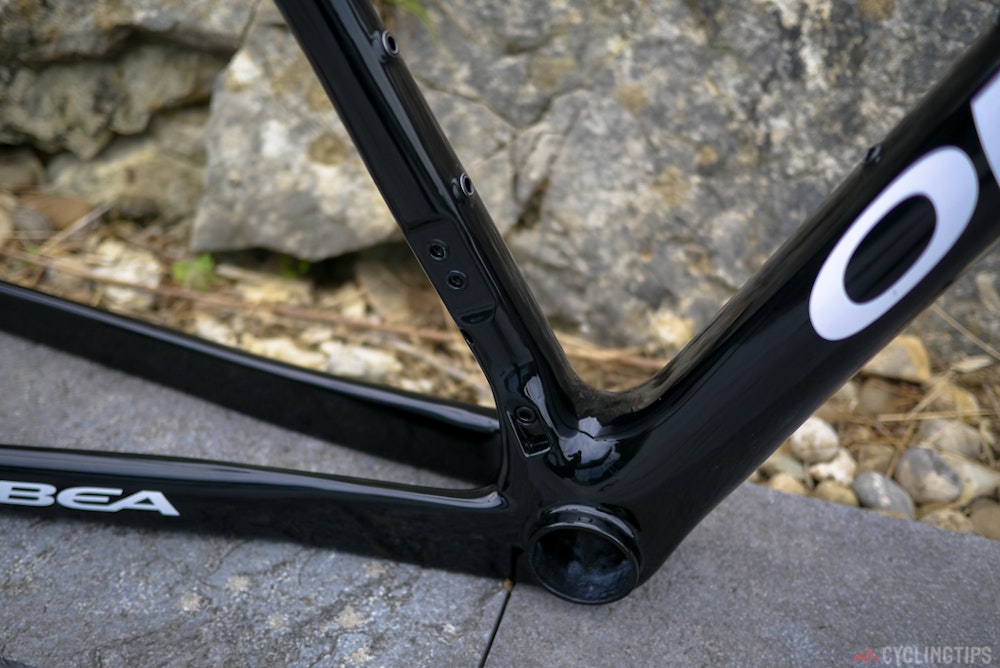
One slight problem I found with the Orca was the slightly wide top tube shape that only gradually curves outwards when it joins the seat tube. I managed to rub my (not so large) thighs against this at the start of the ride and on occasion when going full tilt while climbing standing up. It’s only millimeters and will be different for each rider but it’s a slight distraction, albeit one I slowly became used to.
One potential design flaw I spotted was the spot where the front derailleur cable exits the bottom bracket area. It’s a large-enough hole that cable routing will be easy, but also big enough that water will easily enter in a downpour. Thankfully there’s a hole under the bottom bracket that’ll allow it to run out.
AVANT 2017
The second bike Orbea revealed at the launch was the new Avant, the brand’s performance endurance frame aimed at sportif, all-day riders. For the Avant, the racing snake geometry of the Orca has been replaced with a much more relaxed riding position. Again Orbea has been on the weight-saving game and reduced the latest Avant frame by an impressive 200g; from 1,190g to 990g.
To achieve a more relaxed position, while not making the bike look too garish, Orbea engineers lengthened the fork legs by 10mm, and reduced the headset stack height by 10mm. This, along with wider fork legs, allows the bike to accept 28mm tires, though on inspection I’d guess it could quite easily fit 30mm tires.
The lengthening of the forks also allowed Orbea to play about with front-end compliance. You’d think this would result in a slightly less rigid fork but there was no sign of this when riding (and especially during hard braking).
The disc brake version comes with 12mm thru-axles and flat-mount callipers. It’s also available in a rim brake version, though for the intended market I can quite easily see the disc being the more popular (and wiser) choice.
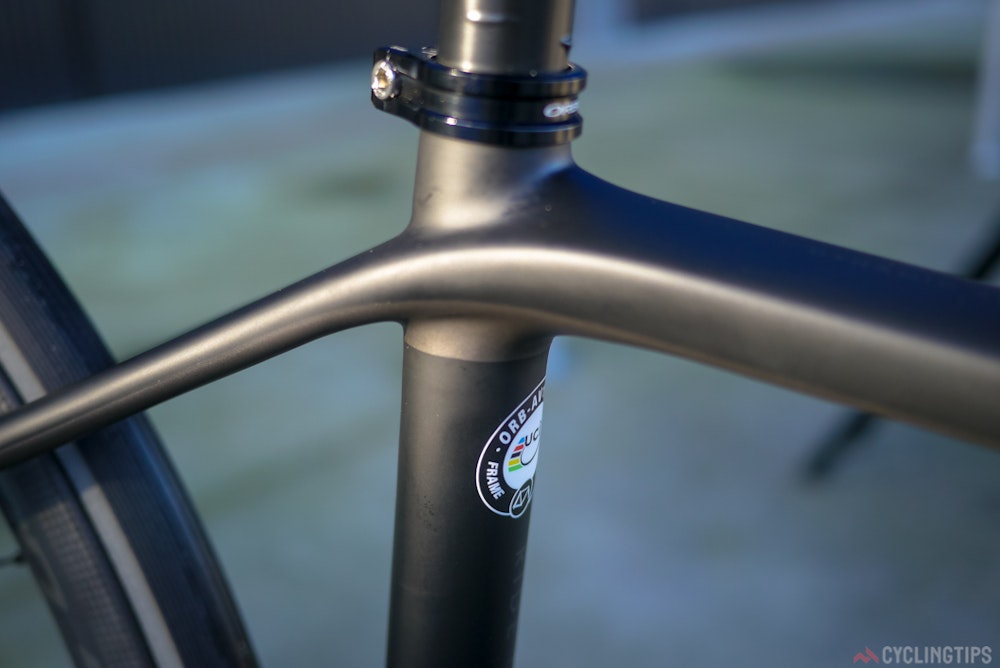
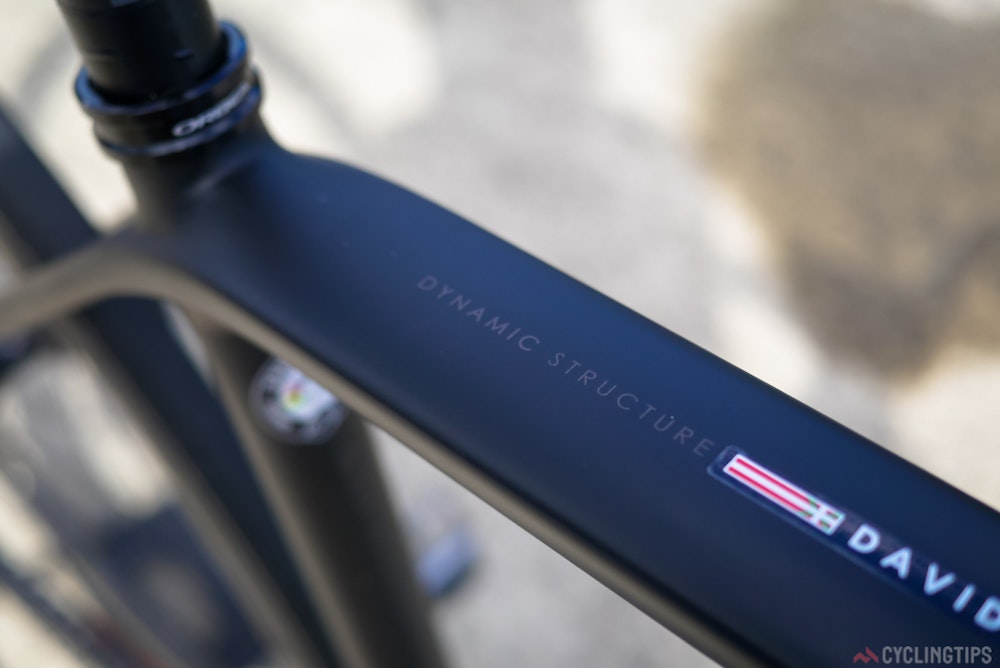
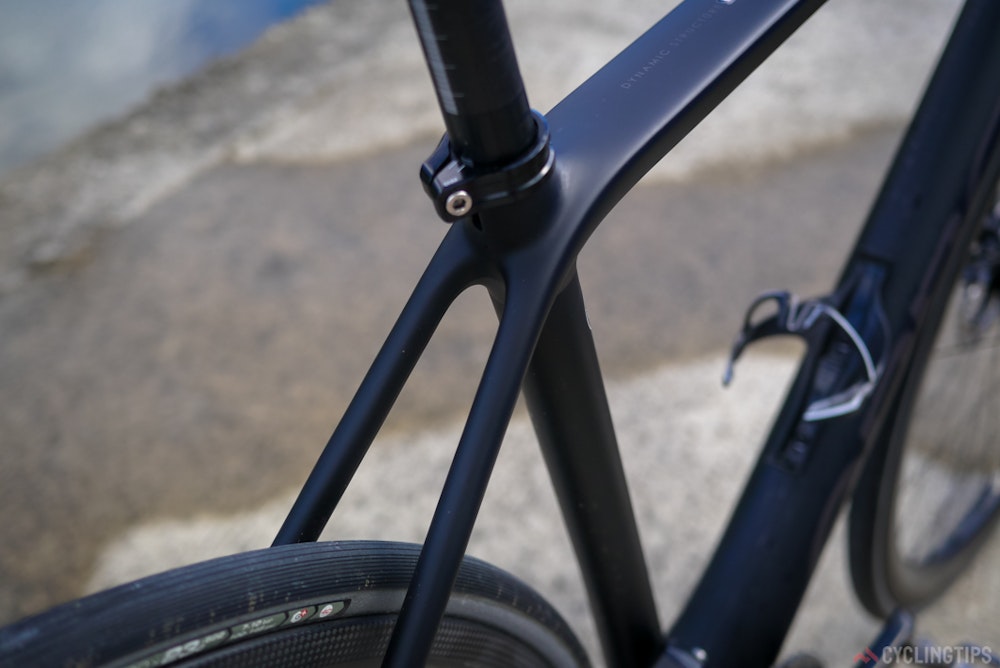
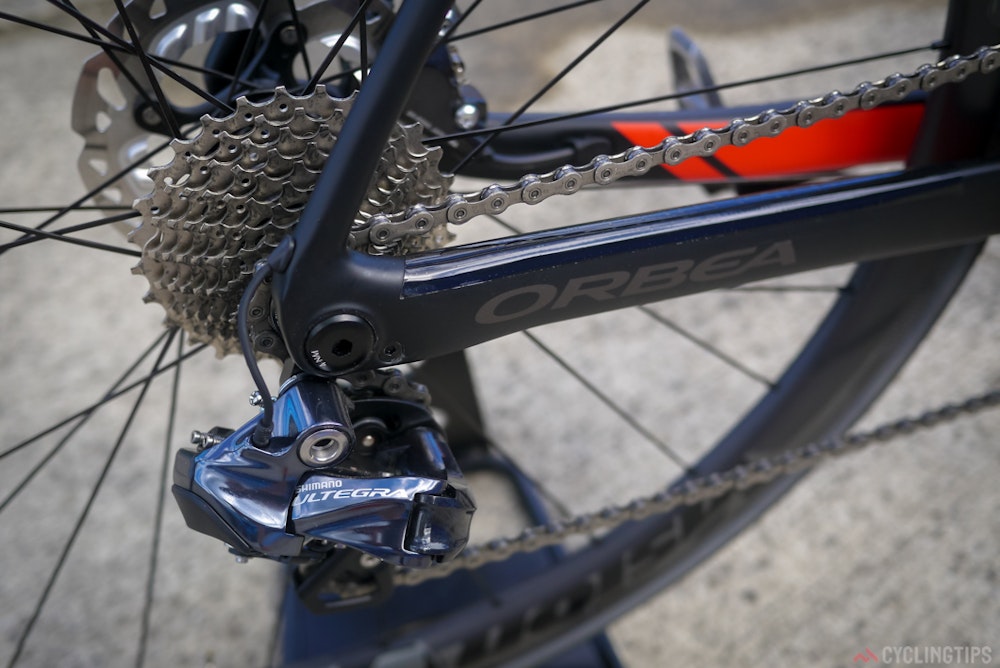
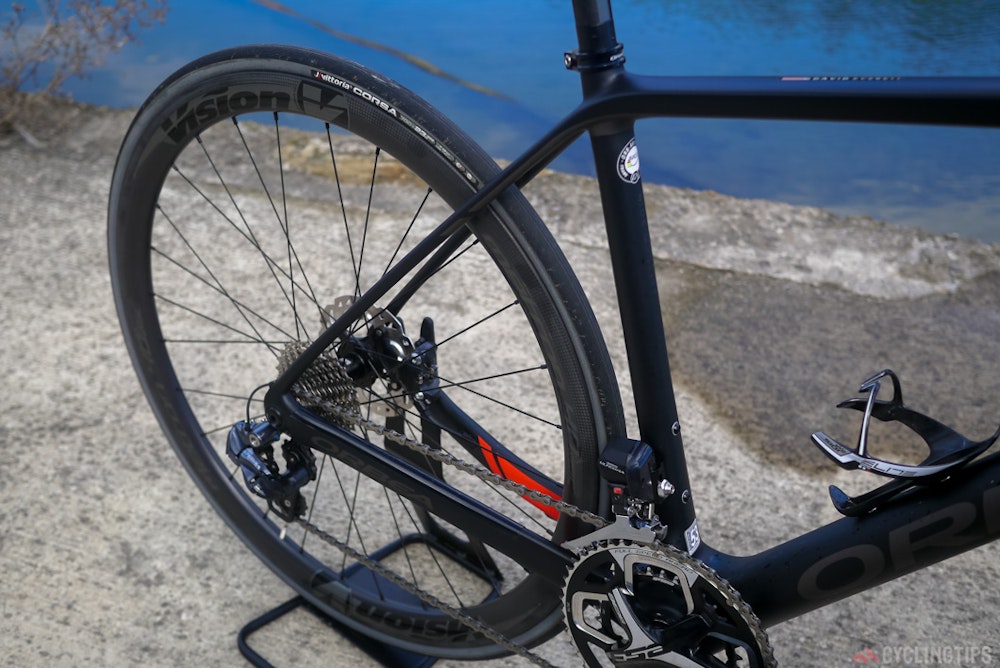
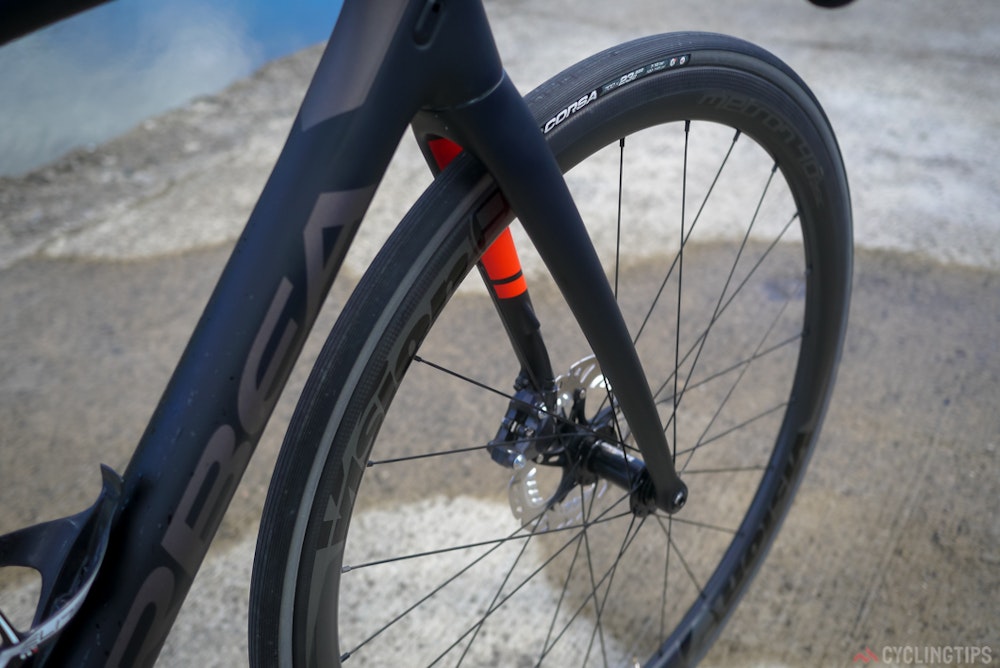
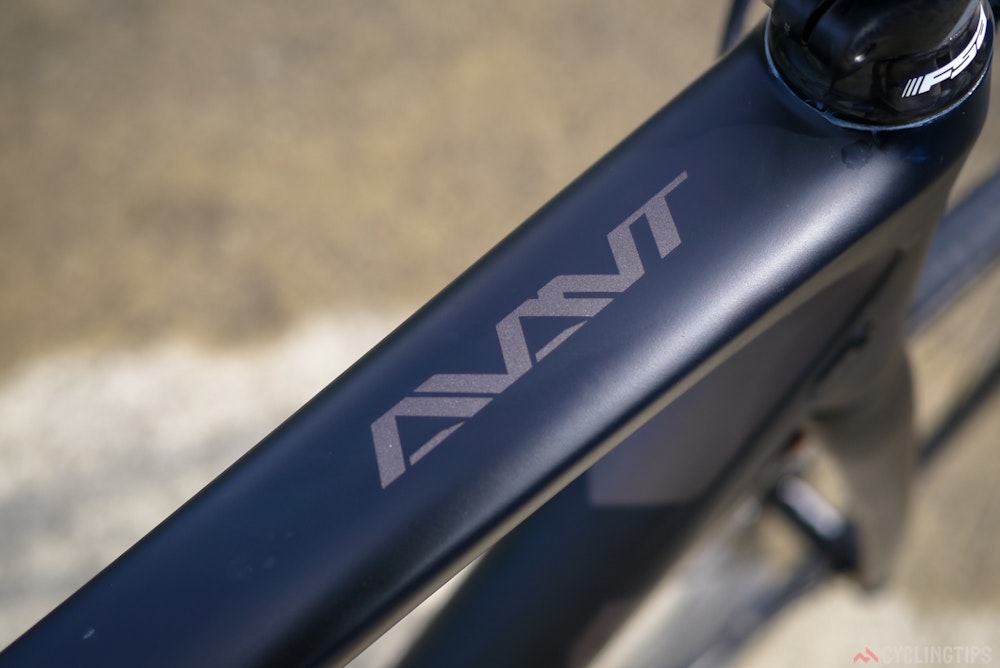
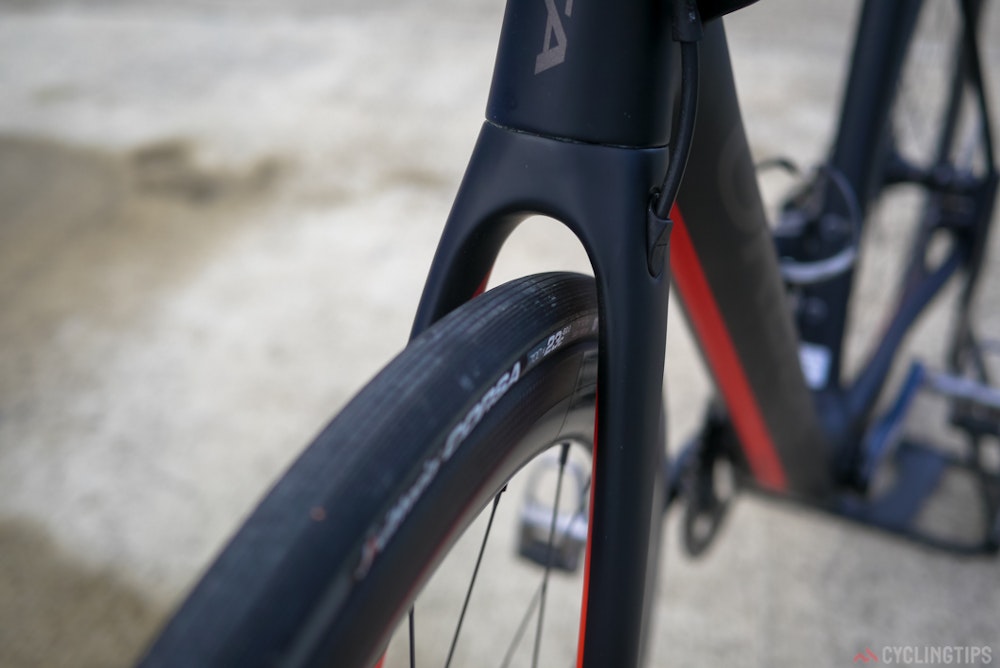
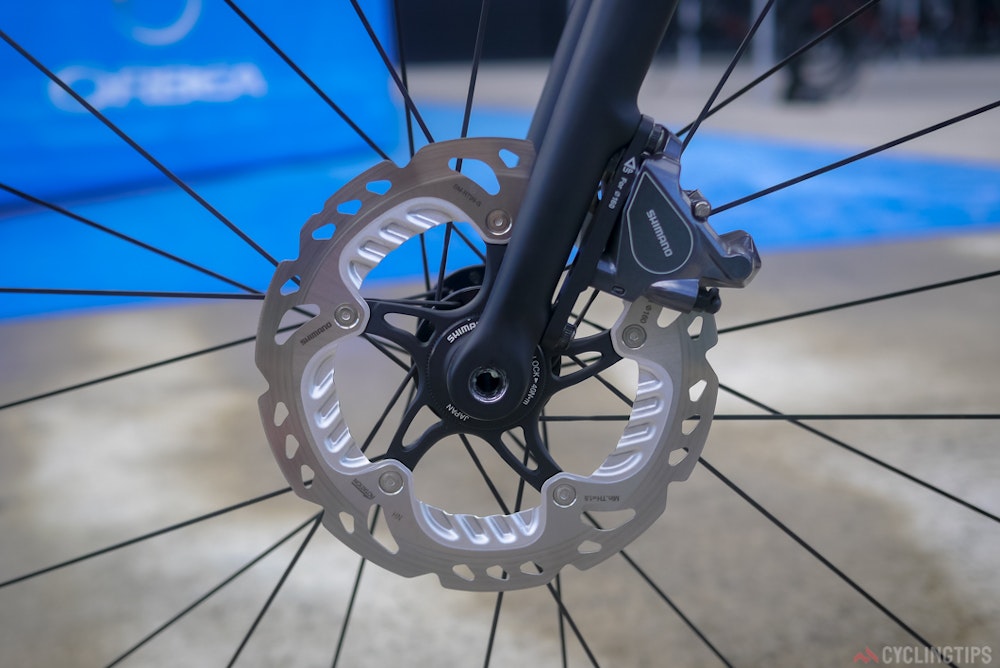
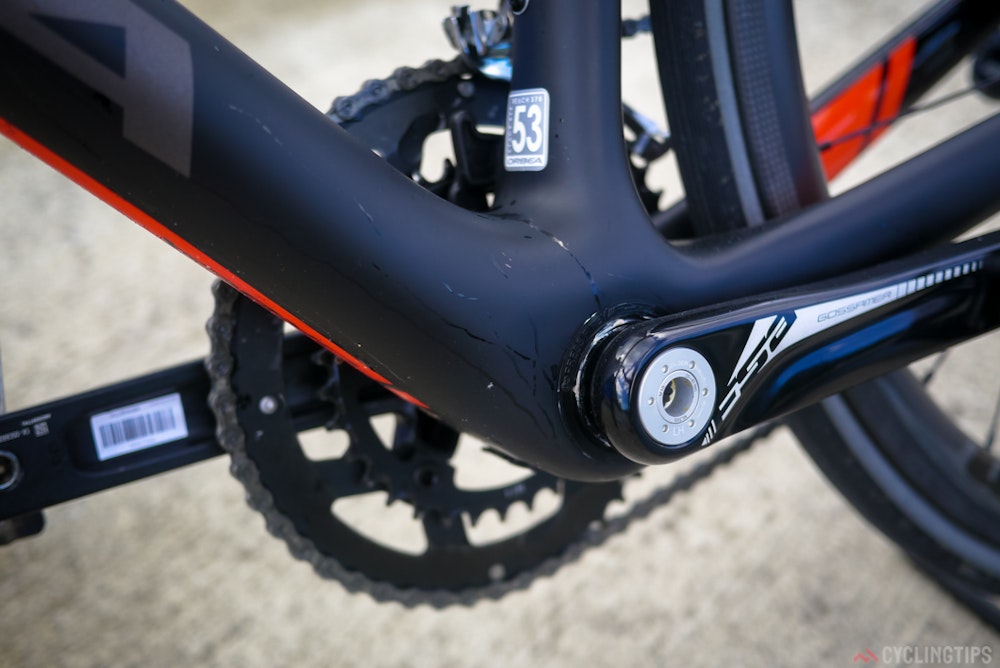
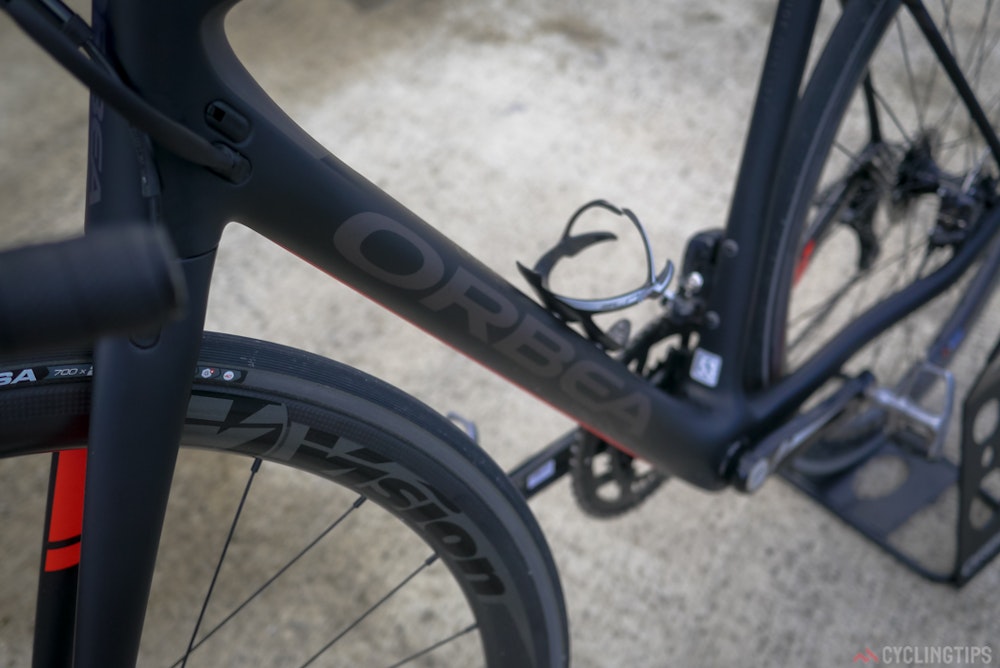
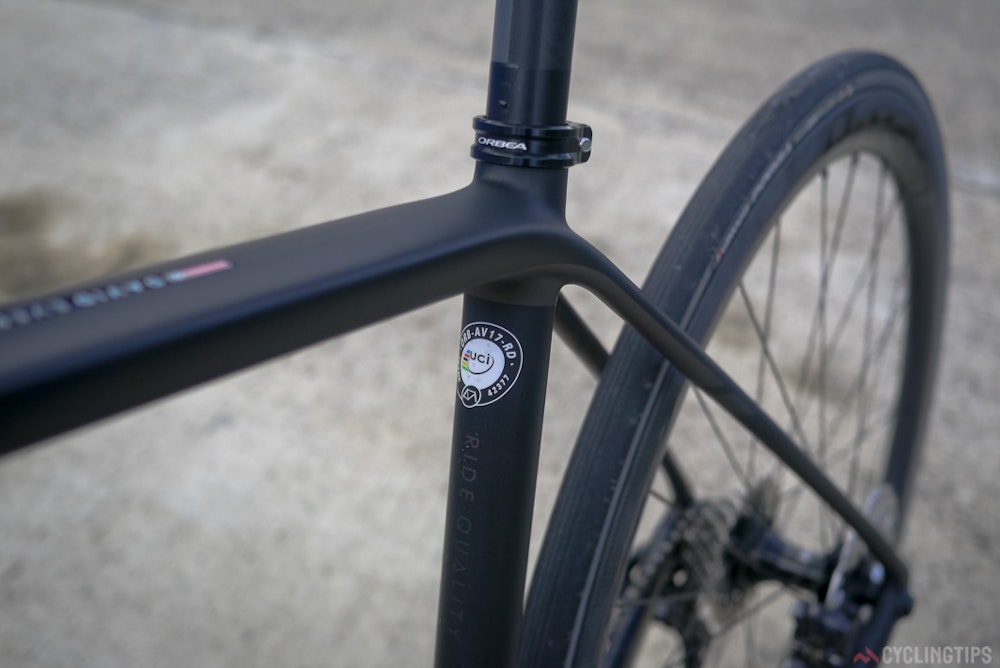
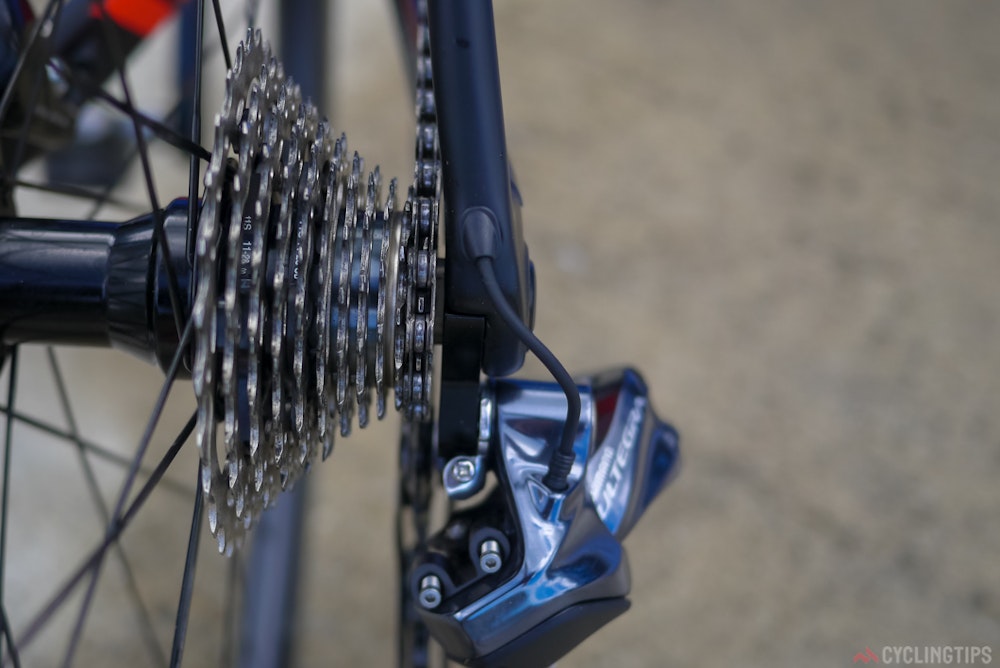
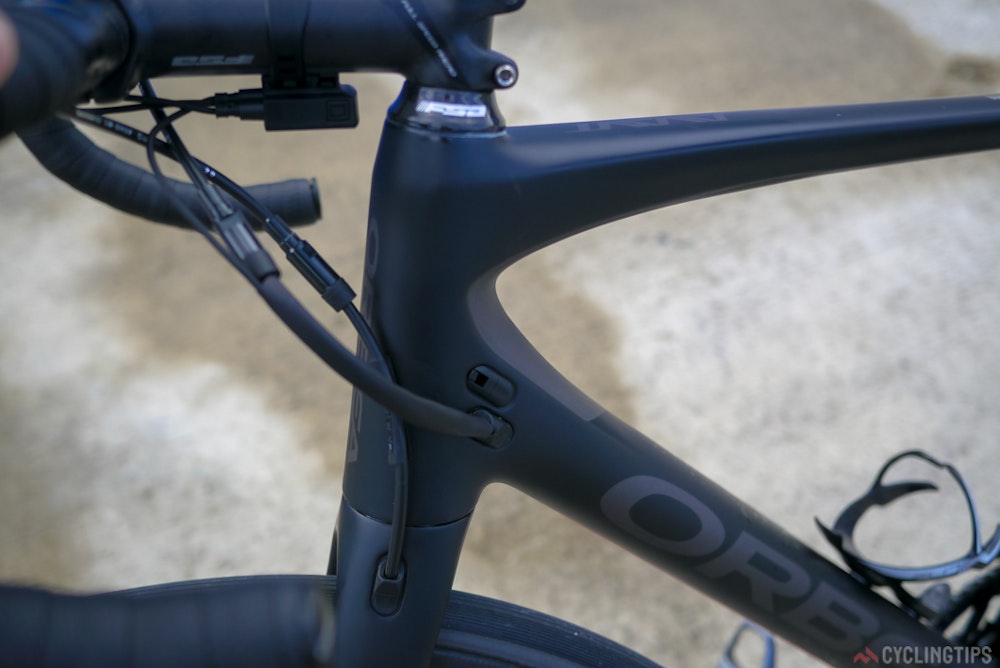
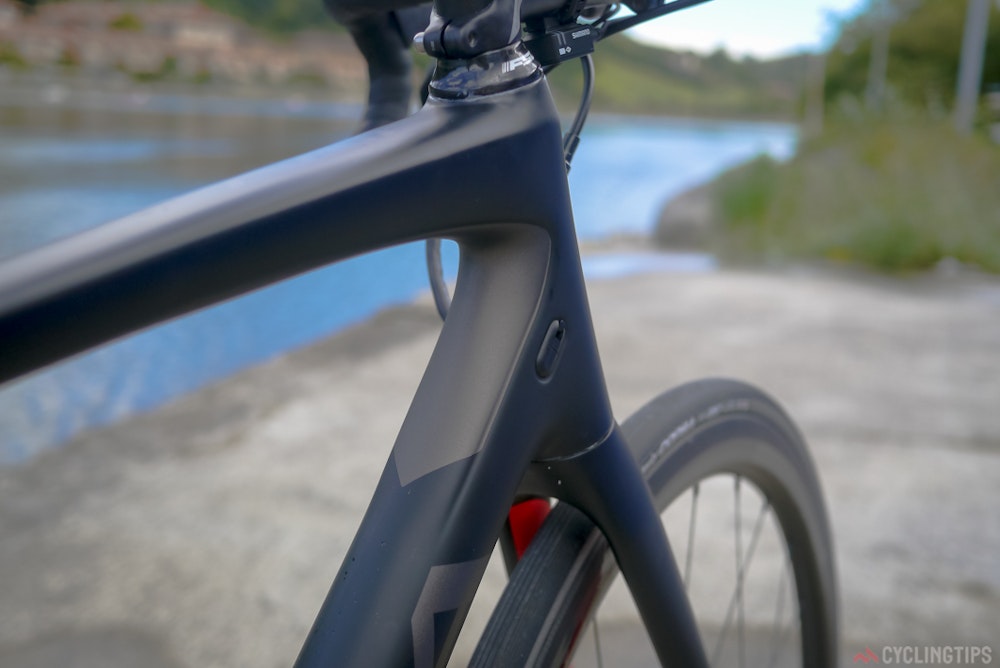
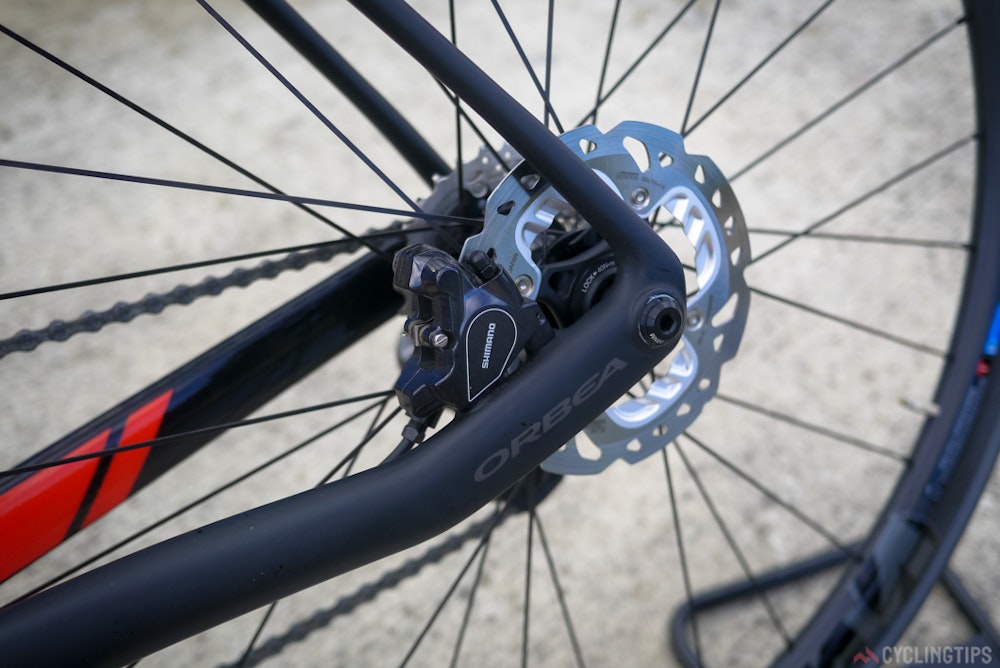
A dropped top tube matched with a 27.2mm seat post is nothing new in the performance road bike market. But the design works, adding that extra bit of comfort. Along with the disc- and rim-brakes, there is also a hydro option. Across the range, there are three geometry options and 21 sizes.
One thing Orbea was keen to point out is the fact they don’t do a women’s specific model. Orbea looked into the specifics of body shapes (reach, inside leg length, torso size … all the measurements that matter when getting a perfect fit) and came to the conclusion that variations in male and female body shapes often overlap. Reading between the lines it sounds like Orbea engineers believe the “women’s specific” idea is more of a marketing ploy than a necessity, though I wouldn’t want to put words in their mouth.
Cable routing is internal, as with the Orca, and both bikes use the BB386 Evo bottom bracket.
RIDING THE AVANT
My first experience of the bike was an 8km enforced time trial; enforced because I took a little longer than expected to set up my bike, meaning I had to chase the rest of the journalists, head down. Not the ideal way to start the second day’s ride in the Basque hills, but 4km of flat followed by a 4km climb to one of the many gorgeous villages that sit nestled in the hills around Orio soon got me acquainted with how the bike performed under pressure.
Chasing to catch the peloton I found that even with hands draped over the top of the bars in a makeshift TT position, the bike held its line perfectly and kept its speed well.
It also handled well while climbing; not nearly as snappy or floaty as the Orca but it’s certainly no slug and actually surprisingly stiff. Where the bike came into its own was the descents. The bike sits well on the road and exudes confidence when cornering, the disc brakes and the updated fork design resulting in a predictable and enjoyable descending experience.
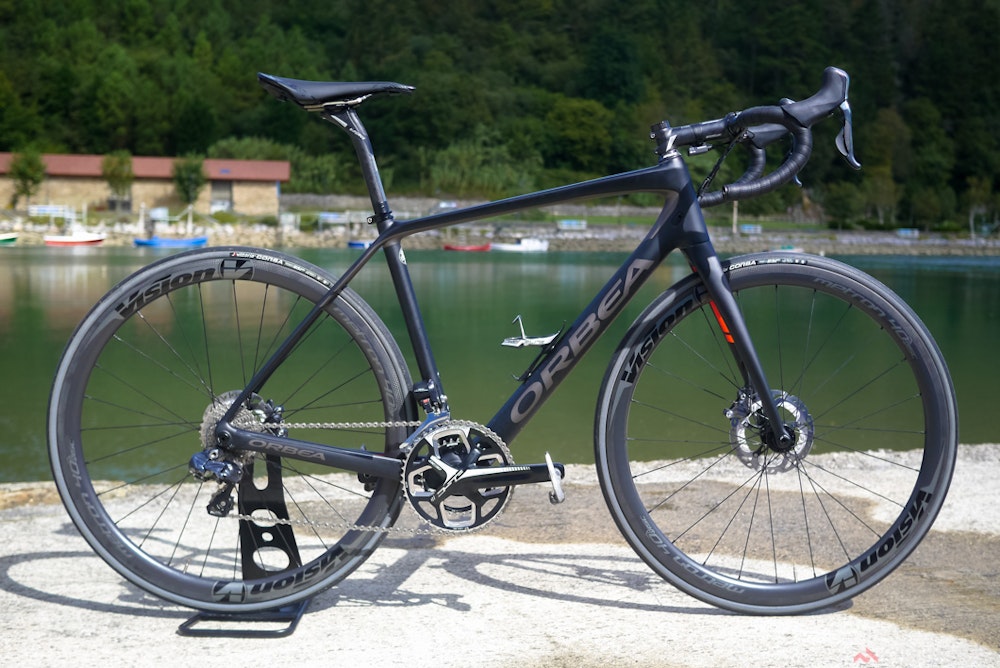
Comparing positions between the Orca and the Avant I was surprised I didn’t use the drops that much on the Avant. Instead I gravitated to the hoods, wanting those extra few centimetres of reach. For some who are used to the low and long position on race bikes, the Avant may feel slightly too compact.
Don’t mistake it for a slouch, though — the Avant, while comfortable, is still stiff. Over rougher roads you’ll get quite a bit of road feedback, similar to the Orca in many regards.
It felt to me like the sort of bike that’s made for the people who like to ride hard all day, or want to take on a gran fondo as fast as possible. Compared to bikes like the Trek Domane or the latest Specialized Roubaix it’s nowhere near as ‘plush’ but it does nicely straddle that ground between all-day comfort and fast race machine.
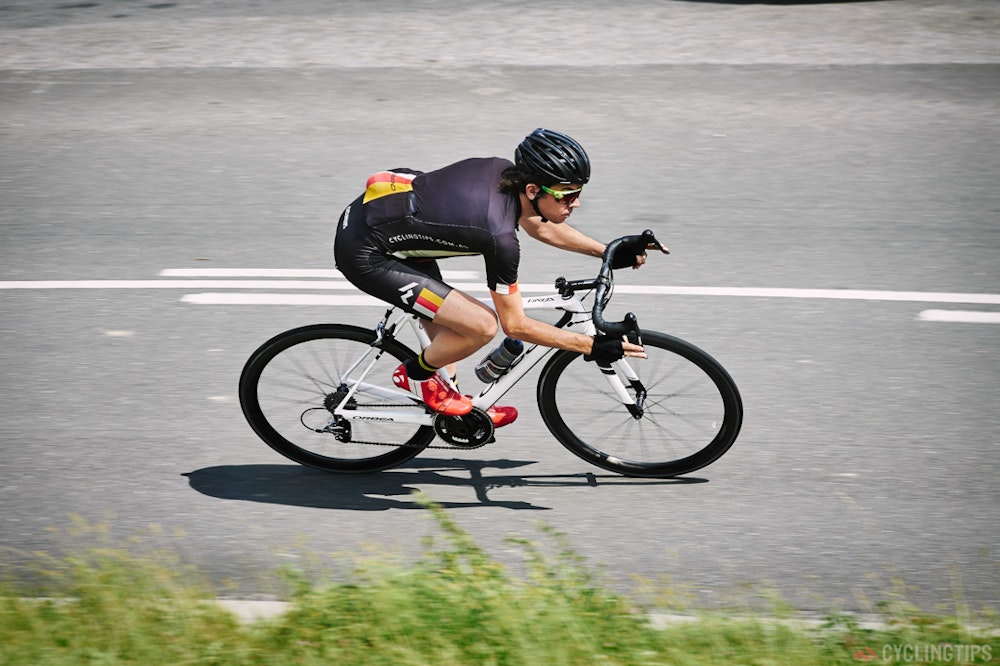
The Basque climbs are possibly one of the most underrated training (and testing) grounds. Worth a visit, with or without an Orbea.
ROUND-UP
Orbea has put forward two bikes that should have a few heads turning this year. The Orca definitely should be a contender for anyone looking for a fully fledged race bike. It’s snappy, fast and good looking. The Avant will suit those who don’t want the super-smooth ride that a Roubaix or Domane offers, but a fast, relatively lightweight bike that they can get out on all day without needing a visit to the chiropractor afterwards.
The design and technology in neither the Orca nor Avant is particularly groundbreaking — it’s tried and trusted, a little rejigged in places, but used in the way it was intended to be. There are no gimmicks here either, it’s solid workhorse equipment, designed to do a job, and do that job well.
The result is two bikes that hit their intended markets exceptionally well. The Avant ticks both the ‘performance’ and ‘endurance’ boxes while the Orca is simply a blast to throw about; a bike that is as lovely to ride as the region it was developed in.
Disclosure statement: Dave Everett travelled to Orio as a guest of Orbea. CyclingTips would like to thank Orbea for the opportunity to ride and review the company’s new bikes.
Follow BikeExchange: Email | Facebook | Twitter | Instagram | YouTube | STRAVA


